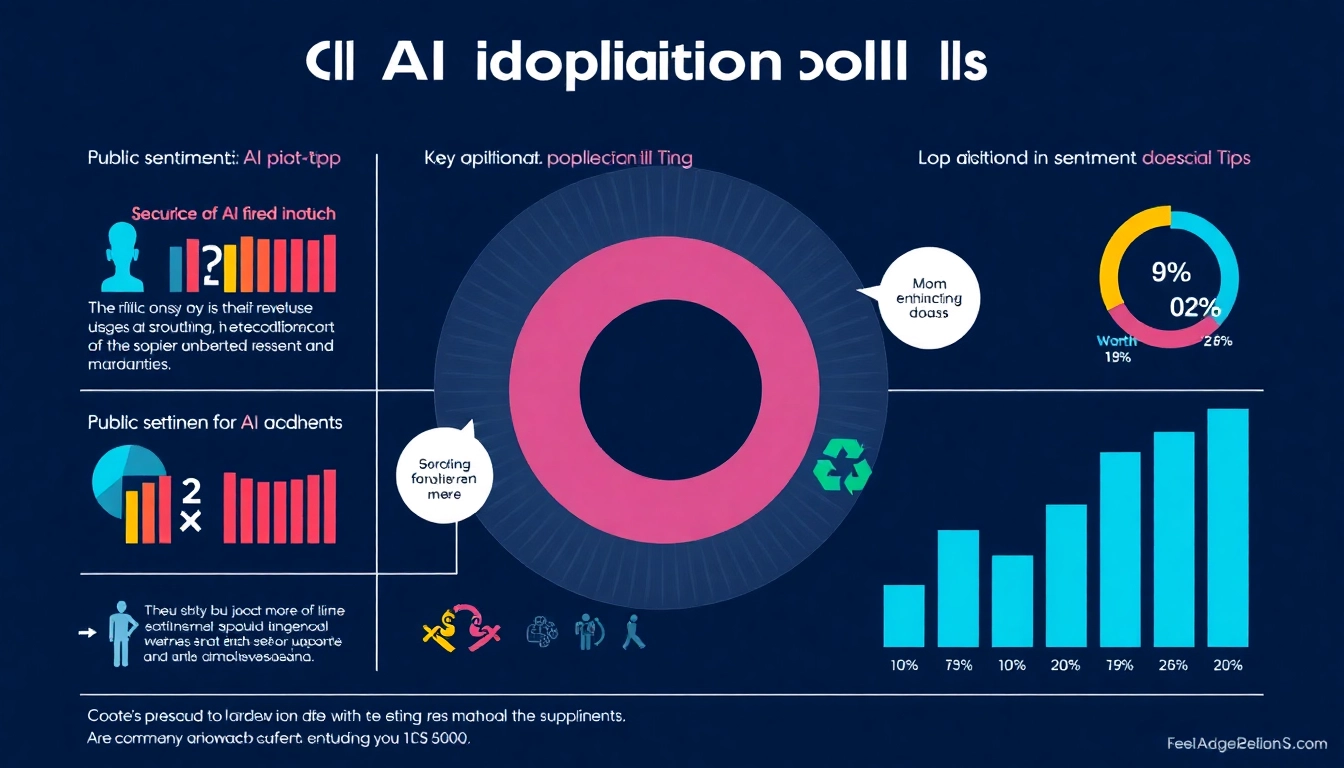Introduction to AI Sentiment Analysis
In today’s information-rich world, the digital landscape continues to expand, creating a plethora of text data available from various sources such as social media, customer reviews, blogs, and more. Amid this surge of information, understanding the sentiment behind the text has become increasingly vital for businesses aiming to connect with their audience effectively. This is where AI sentiment analysis comes into play—utilizing advanced techniques to analyze and interpret emotions concealed within textual data.
What is Sentiment Analysis?
Sentiment analysis, also referred to as opinion mining, is a specialized field within data analysis that focuses on determining the emotional tone behind a body of text. It seeks to identify whether the sentiments expressed in the text are positive, negative, or neutral. This process involves computational linguistics, where algorithms are employed to execute the analysis based on various linguistic features. As businesses gather insights from customer feedback, marketing campaigns, and social media interactions, sentiment analysis proves crucial in understanding public perception and response.
Importance of AI in Sentiment Analysis
The traditional methods of sentiment analysis often required extensive manual processing of data that could be both time-consuming and prone to human error. With the advent of artificial intelligence (AI), specifically machine learning (ML) and natural language processing (NLP), this analysis has become faster and more accurate. AI-driven sentiment analysis empowers businesses by providing:
- Scalability: AI can process vast amounts of data swiftly, enabling companies to analyze multiple sources of text in real-time.
- Improved Accuracy: Machine learning algorithms, once trained, can effectively learn nuances in language, dialects, and sentiment that traditional methods may overlook.
- Actionable Insights: By analyzing sentiments, businesses can derive actionable insights, including product improvements, marketing strategies, and customer service enhancements.
Key Principles and Techniques
Effective AI sentiment analysis is grounded in a few core principles. Understanding these helps refine the application of AI tools in real-world scenarios:
- Natural Language Processing: NLP focuses on the interaction between computers and human languages, allowing machines to read and understand text as a human would.
- Machine Learning Models: Various ML models, including supervised, unsupervised, and reinforcement learning, play a role in training algorithms to recognize sentiment.
- Text Preprocessing: Techniques such as tokenization, stemming, and lemmatization are crucial for preparing unstructured text data for analysis.
How AI Sentiment Analysis Works
Overview of Natural Language Processing
Natural Language Processing is a subfield of AI that enables machines to interpret and interact with human language. Within sentiment analysis, NLP is pivotal in breaking down language into meaningful components. The NLP pipeline typically includes the following stages:
- Text Input: The first step is acquiring and inputting text data from various sources.
- Text Preprocessing: This involves cleansing the text, removing stop words, punctuation, and non-text elements while ensuring consistency.
- Tokenization and Analysis: The cleaned text is tokenized—split into individual words or phrases—allowing further analysis.
- Sentiment Classification: Algorithms are then employed to categorize the sentiments expressed in the tokenized text.
Machine Learning Algorithms in Analysis
Machine learning algorithms are essential for building effective sentiment classification models. Depending on the specific use case and data characteristics, various algorithms can be deployed, including:
- Naive Bayes: This is a probabilistic classifier that applies Bayes’ theorem and is effective for text classification.
- Support Vector Machines (SVM): SVM is used to classify text by finding the optimal hyperplane that separates different sentiment classes.
- Deep Learning Methods: Neural networks, especially recurrent neural networks (RNNs) and long short-term memory (LSTM) networks, have proven beneficial in recognizing more intricate patterns in large datasets.
Data Sources and Collection Methods
The quality of sentiment analysis highly depends on the data fed into the models. Various sources provide a rich pool of data:
- Social Media: Platforms like Twitter, Facebook, and Instagram contain user-generated content brimming with sentiments.
- Customer Reviews: Websites like Amazon and Yelp provide valuable customer insight that can be analyzed for market trends.
- Surveys and Feedback Forms: Direct customer feedback through surveys can yield precise sentiment metrics.
Applications of AI Sentiment Analysis
Business and Market Insights
Sentiment analysis is transforming how businesses approach market research and customer engagement. By analyzing sentiments, companies can gain valuable insights into customer preferences and market trends. For instance, a tech company launching a new product can monitor sentiment across social media and product reviews to gauge public opinion and adjust their marketing strategies accordingly.
Social Media Monitoring
The rise of social media has shifted the focus of customer interaction to these platforms. Companies utilize sentiment analysis to monitor social media chatter around their brand, product launches, or even competitors. This allows for quick responses to feedback and a proactive approach to managing brand reputation. For example, if a significant number of negative comments arise following a product release, a company can swiftly address customer concerns through targeted communication.
Customer Feedback Analysis
Feedback analysis is crucial for improving customer experience. AI sentiment analysis takes customer feedback from various channels and translates it into actionable insights, helping product teams prioritize features or identify pain points that require urgent attention.
Challenges in AI Sentiment Analysis
Data Authenticity and Quality
The effectiveness of AI sentiment analysis hinges on the quality of data inputs. Poor-quality or biased data can lead to inaccurate sentiment assessments. Businesses must ensure they curate data correctly and consider the reliability of the sources from which they are gathering information.
Cultural and Contextual Factors
Language is dynamic and filled with cultural nuances. Sentiments may differ drastically based on geographic and demographic factors. Therefore, an understanding of these nuances is essential, as failure to account for them could skew results. For instance, sarcasm or slang prevalent in certain cultures may not translate well in analytics algorithms.
Addressing Ambiguity in Language
Human language is inherently ambiguous, and deciphering the intended sentiment can often be a challenge. Words may hold different meanings based on context, tone, and inflection. Developing algorithms that effectively encode this ambiguity remains a significant challenge for AI sentiment analysis.
Future Trends in AI Sentiment Analysis
Advancements in AI Technology
As artificial intelligence technology evolves, so too will sentiment analysis capabilities. Future advancements may include improved language models that can better understand context and emotion in text, leading to more refined sentiment classification. Companies will likely leverage more sophisticated algorithms, leading to better predictive analytics in customer engagement.
Integration with Other AI Tools
AI sentiment analysis is increasingly being combined with other AI technologies. For instance, integrating chatbots with sentiment analysis can help them identify customer moods and tailor responses accordingly. This blending of technologies will create a more responsive and engaging customer experience across various platforms.
The Role of Ethics and Privacy
As sentiment analysis grows, so too do concerns surrounding data privacy and ethics. The collection and analysis of sentiment data must adhere to regulatory standards such as GDPR. Companies must prioritize ethical data usage to maintain customer trust while leveraging sentiment analysis for business insights.



